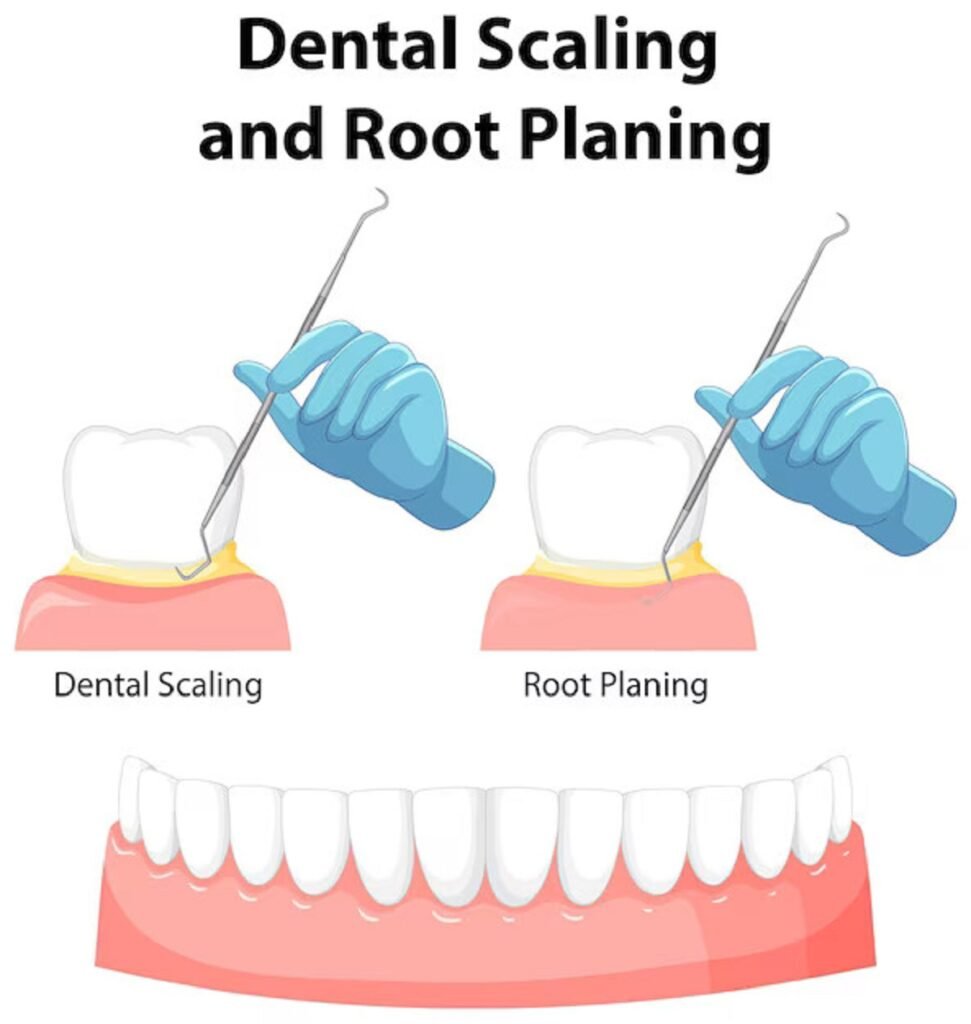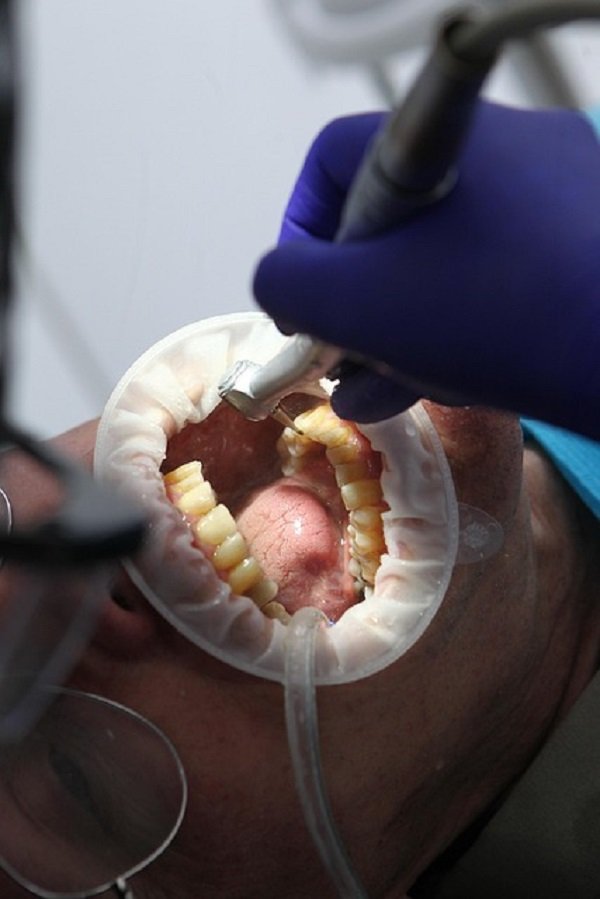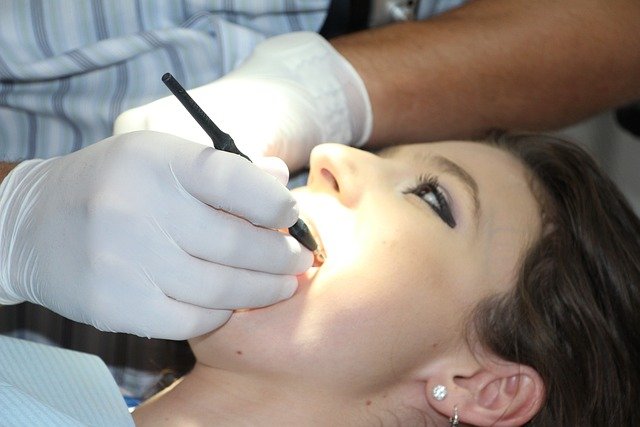Gums that bleed or feel sore when you brush might seem like no big deal at first, but if it keeps happening, it could be the early signs of gum disease. And once you have got it, a regular cleaning won’t be enough to fix the problem.
Thanks to modern dental care, dental scaling, and root planing offer a non-surgical way to stop gum problems from getting worse, often with minimal discomfort.
Recovery plays a key role too. Knowing how to care for your gums afterward can help you get the best long-term results and avoid further complications.
Before you proceed, check out our complete guide on scaling and root planing. It covers the procedure, recovery tips, and benefits. So, let’s get started!

- What is Dental Scaling and Root Planing?
- Why Is It Necessary?
- Common Signs You Might Need It
- How Do Dental Scaling and Root Planing Work?
- Is Dental Scaling and Root Planing Painful?
- What’s the Recovery Like?
- Do I Need Dental Scaling and Root Planing?
- Cost of Dental Scaling and Root Planing in the USA
- Scaling and Root Planing vs. Regular Cleaning
- Why It’s a Non-Surgical Answer to Gum Disease?
- Post-Treatment Care and Products That Help
- How Does Aidite Support Gum Treatment and Recovery?
- Final Thoughts
- FAQs
What is Dental Scaling and Root Planing?
Let’s start simple. Dental scaling and root planing is a deep cleaning method used by dentists to treat the early stages of gum disease. It’s more thorough than your typical cleaning and targets areas beneath the gum line where bacteria hide.

- Scaling removes hardened plaque (tartar) from the tooth surface.
- Root planing smooths out the tooth roots so the gums can reattach more easily.
If you’ve been told you have gingivitis or mild to moderate periodontitis, this is often the first line of defense.
Why Is It Necessary?
Once tartar has built up below your gums, brushing alone can’t reach it. Without treatment, the bacteria under your gums can lead to serious problems—bone loss, tooth loss, and chronic bad breath, just to name a few.
Here’s where the benefits of dental scaling and root planing for gum disease come in. It’s one of the most effective non-surgical treatments to stop things from getting worse.
Common Signs You Might Need It
How do you know it’s time to talk to your dentist about this?
Watch for:
- Persistent bad breath
- Bleeding gums when brushing or flossing
- Swollen or red gums
- Receding gums
- Loose teeth
If any of these sound familiar, your dentist might suggest a deep cleaning teeth procedure in the USA, which is another way of saying dental scaling and root planing.
How Do Dental Scaling and Root Planing Work?
The process is really very simple. It usually takes you one or two visits depending on the condition of your gums. The following steps are taken to save your teeth:
- Examination: The dentist inspects your gums. After that, he puts a probe into the pocket around your teeth to see the depth of tooth loss. This allows for assessing the severity of the gum disease.
- Local Anaesthesia: They apply local anesthesia to numb the area. It is operated to make sure you do not feel discomfort during the treatment.
- Scaling: Dentists use manual tools or ultrasonic instruments to scale. They scrape bacterial tartar plaques and bacterial toxins from below the gumline.
- Root Planing: The exposed tooth roots get smoothed. This helps the gums stick back and keeps bacteria from building up in the future.
- Follow-up: A follow-up appointment is typically set for a few weeks later. This helps monitor your healing and see if you need any extra cleaning or maintenance.
This method works well to control early-stage periodontal disease. It also helps prevent tooth loss.

Is Dental Scaling and Root Planing Painful?
It sounds like it could be, right? The truth is that most people report only mild discomfort. Let’s understand it better with the following points:
- During the Procedure:
- Local anesthetic is usually applied
- Most patients feel pressure, not pain
- A slight scraping or tugging sensation is normal
- After the Procedure:
- Mild gum soreness or swelling for 1–3 days
- Possible sensitivity to hot or cold drinks
- Minor bleeding may occur, especially after flossing
- Over-the-counter pain relievers can help
- Pain Level Varies Based On:
- Gum health and depth of infection
- Personal pain threshold
- Skill of the dental professional
- Quality of dental materials used (e.g., Aidite-supported tools can enhance comfort)
- What Helps:
- Use desensitising toothpaste
- Avoid hot, spicy, or hard foods temporarily
- Keep up with gentle oral hygiene as advised
In short, discomfort is mild and manageable, especially when treated early and with quality care.
What’s the Recovery Like?
The good news? Recovery is quick.
Here’s what to expect after your dental scaling and root planing recovery time begins:
- Gums may be sore for 1–3 days
- Teeth might feel more sensitive temporarily
- Slight bleeding or swelling is normal
You’ll be given aftercare tips by your dental team, but here are a few general ones:
- Avoid hard or sticky foods for 24–48 hours
- Use a soft-bristled toothbrush
- Rinse with warm salt water
- Brush and floss gently but consistently
Do I Need Dental Scaling and Root Planing?
That depends on the condition of your gums. Ask yourself:
- Have I skipped cleaning for over a year?
- Are my gums always inflamed?
- Have I noticed bone loss on recent X-rays?
If yes, chances are you might need it. Do I need dental scaling and root planing is a question your dentist can answer better after a full periodontal evaluation.
It’s better to act early than wait until you’re dealing with permanent damage.
Cost of Dental Scaling and Root Planing in the USA
Let’s talk about money.
The cost of dental scaling and root planing in the USA depends on how much of your mouth needs treatment. Typically, the procedure is priced per quadrant (each quarter of your mouth):
- One quadrant: $150–$350
- Entire mouth: $600–$1,200
Most dental insurance plans cover some or all of it if you’re diagnosed with periodontal disease. Without insurance, many clinics offer payment plans or bundles.
Scaling and Root Planing vs. Regular Cleaning
It’s not the same as your biannual cleanings.
Regular dental cleaning only works above the gumline. But dental scaling and root planing vs. regular cleaning is like comparing vacuuming a carpet to deep shampooing it.
Scaling and root planing go under the gums, remove deeper buildup, and help restore gum health. If your dentist recommends it, it’s because regular cleanings aren’t enough anymore.
Most people think a routine dental cleaning is enough to keep gums healthy. But when gum disease sets in, a deeper approach, like dental scaling and root planing, may be necessary. Here’s how they compare:
| Feature | Regular Cleaning | Dental Scaling and Root Planing |
| Purpose | Preventive care | Treatment for gum disease |
| Area Cleaned | Above the gumline | Below the gumline and root surfaces |
| Performed by | Dental hygienist | Dentist or periodontist |
| Anaesthesia Required | No | Yes (local anaesthetic) |
| Treatment Frequency | Every 6 months | As needed, based on gum condition |
| Recovery Time | None | 1–3 days (minor soreness or sensitivity) |
| Effectiveness for Gum Disease | Not effective once gum pockets form | Highly effective for reversing early gum disease |
| Insurance Coverage | Often fully covered | Partially or fully covered if medically necessary |
Why It’s a Non-Surgical Answer to Gum Disease?
You don’t always need surgery to fix your gums.
In fact, non-surgical treatment for periodontal disease starts with procedures like scaling and root planing. It can often reverse early gum disease and prevent the need for more aggressive (and expensive) treatments later on.
For many, it’s the perfect middle ground—effective, affordable, and not invasive.

Post-Treatment Care and Products That Help
Getting your teeth cleaned is only half the battle. Afterward, you need to keep things in check.
This is where using reliable dental materials and tools can make a big difference. Many dental professionals choose solutions like those from Aidite, known for their durable materials used in restorative dentistry. These tools make it easier for dentists to deliver better outcomes—and for patients to heal comfortably.
Whether it’s temporary crowns or prosthetic materials used during your care, the quality of tools matters.
How Does Aidite Support Gum Treatment and Recovery?
While you might not have total control over the specific materials the dentist uses, it’s nice to know that dentists across the country trust brands like Aidite for accuracy and results. Aidite’s products, from dental zirconia block to chairside milling materials, will support your more precise and more efficient operation.
They contribute to better-fitting restorations and long-term gum health—especially when recovery depends on accurate dental work.
Final Thoughts
If you’re noticing signs of gum problems, don’t wait for it to get worse. Dental scaling and root planing are some of the simplest, most effective ways to treat gum disease early without surgery. The treatment is safe, quick, and widely available.
By pairing good dental care with the right materials—like those trusted by professionals from Aidite—you’re giving your mouth the support it needs to stay healthy.
FAQs
How many times do you need scaling and root planing?
Generally, it is performed once and then repeated as needed for maintenance or if gum disease reoccurs.
Can a dental hygienist do scaling and root planing?
Yes, a dental hygienist can perform the procedure, though more severe cases may require a dentist or periodontist.
Do gums grow back after scaling and root planing?
The treatment helps gums reattach to teeth, but it does not fully regenerate lost gum tissue.
How painful is root scaling and planing?
Most patients report minimal discomfort during the procedure, with only slight soreness during the recovery period.
Is scaling and root planing worth it?
Absolutely; it effectively halts gum disease progression and helps maintain long-term oral health, saving you from more invasive treatments later.



